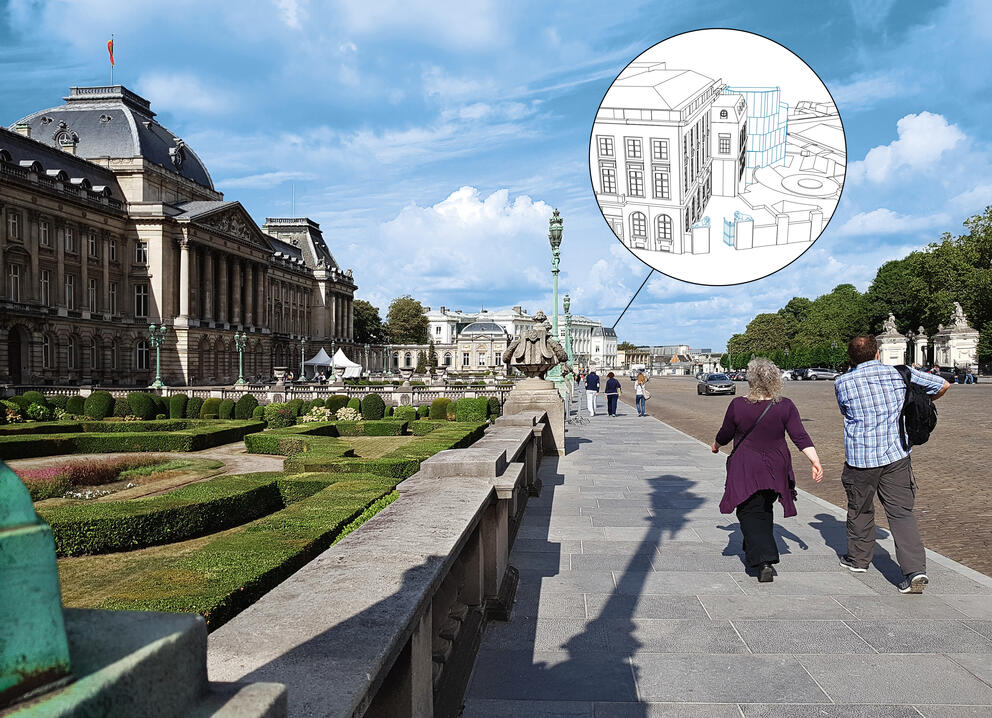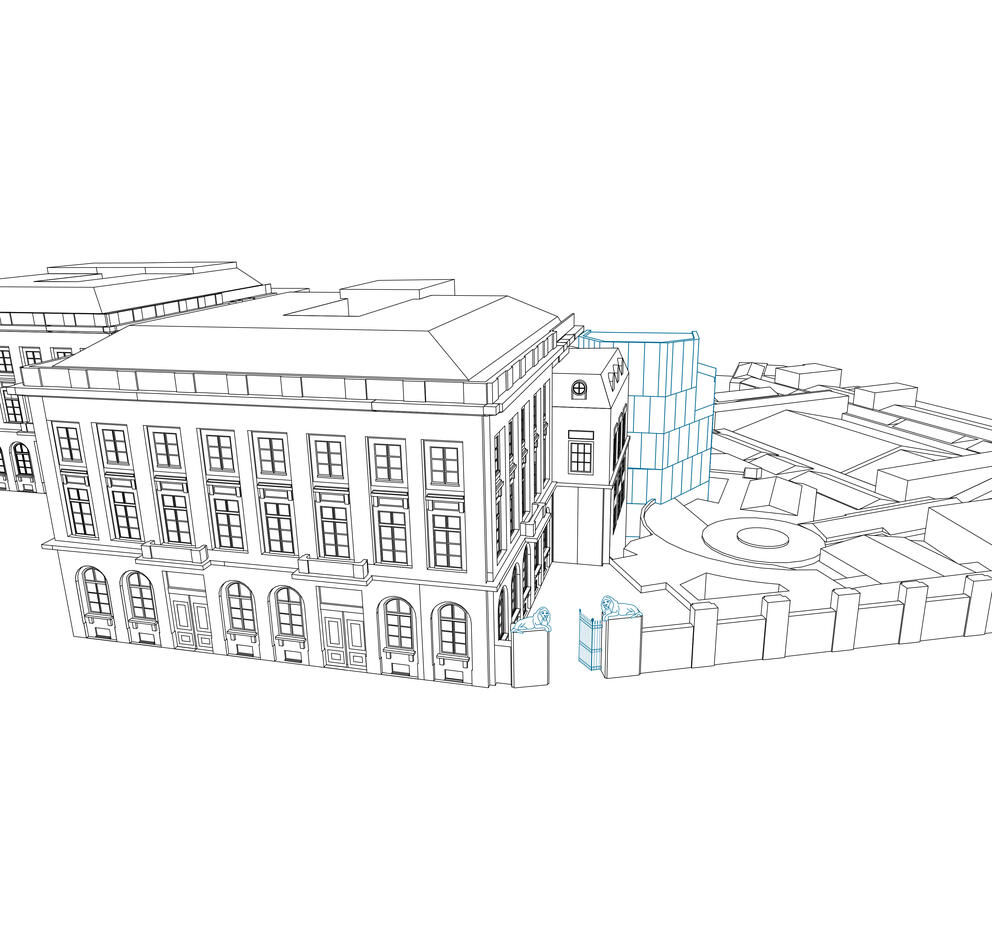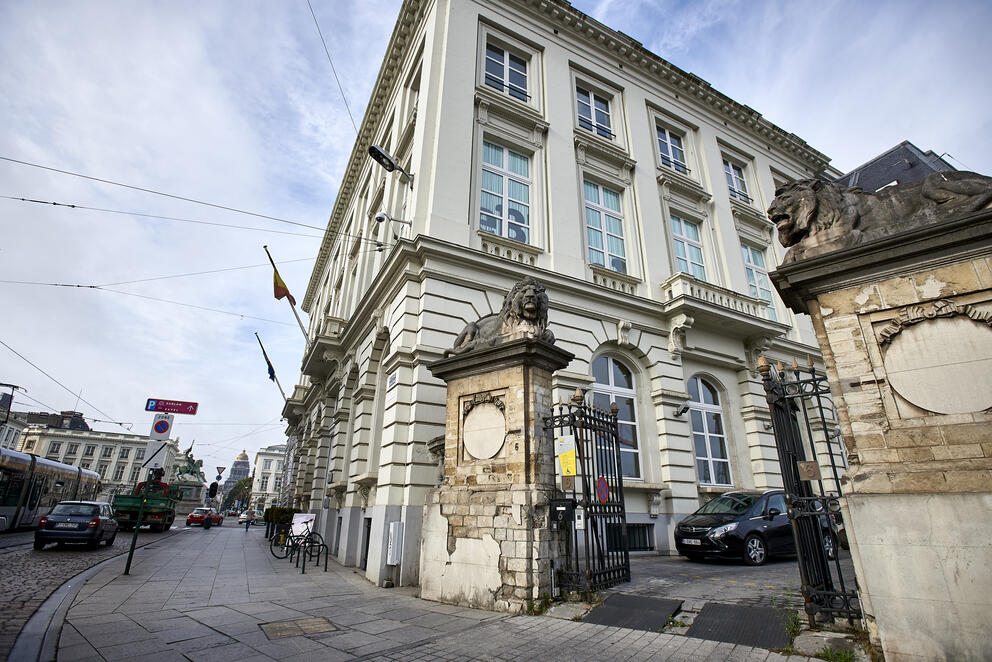The building that will house ‘LE CHAT cartoon museum’ will be constructed by the SAU-MSI
This afternoon, the Minister-President of the Brussels-Capital Region, Rudi Vervoort, and the cartoonist Philippe Geluck signed a partnership agreement on the construction and running of the future ‘LE CHAT cartoon museum’, a short distance from the Royal Palace and Brussels Park.
Along with architect Pierre Hebbelinck, they presented the plans for the building to be constructed by the Urban Planning Corporation (sau-msi.brussels) to host ‘LE CHAT cartoon museum’. (The brochure can be downloaded in French or Dutch)
A new asset for Brussels
Minister-President Rudi Vervoort explained that ‘by 2023, the Brussels-Capital Region will embark on an ambitious cultural project in a place steeped in history, at the heart of a district that’s a favourite with Brussels culture and heritage lovers and visitors to the city from Belgium and abroad.’ The BIP Regional Centre site on Rue Royale is the location that the Government of Brussels has chosen to accommodate Philippe Geluck’s brainchild, ‘LE CHAT cartoon museum’.
The Urban Planning Corporation (SAU-MSI) will erect a contemporary, modular building there which blends in discreetly with the neighbouring historic architecture. Designed by the architect Pierre Hebbelinck, it has been the subject of close consultation with the Royal Commission on Monuments and Sites, the non-profit organisation Mont des Arts and the adjoining institutions.
‘LE CHAT cartoon museum’ will occupy a gross floor area of some 4,000 m2on seven levels, including four above ground. This new cultural institution will be accessible via the gate, flanked by two lions, of 6 Rue Royale which is used as the entrance to the BIP’s Cour des Lions. The SAU-MSI plans to introduce the planning application in 2019, to start construction work in 2021 and to complete it in 2022. Philippe Geluck's team will then see to the interior fittings, ready for the museum to open in 2023.
Rudi Vervoort stated that ‘”LE CHAT cartoon museum” will reinforce the showcase role of the BIP Regional Centre, which already hosts the permanent exhibition experience.brussels, the offices of visit.brussels, a vast interactive model of the region and various one-off or regular activities, including the weekly gatherings of the Regional Government.’
The dream of a Brussels child
For Philippe Geluck, the museum will be ‘the realisation of the dream of a Brussels child who wants to share with as many people as possible the distinctive spirit of Brussels and his dream of fraternity’. With its new museum, he added, ‘Brussels will become the third cartoon city in Europe (after London and Basel), but the first by virtue of the scale of the project.’
The cartoonist explained that ‘LE CHAT cartoon museum’ will be ‘a unique establishment that will celebrate the masters of humorous drawing and the world’s most popular animal. It will consist of three main sections. In the first, a constantly changing display of works will retrace four decades in the life of Le Chat, in all its forms (drawings, sketches, cartoon strips, paintings, screens, sculptures and objects), in addition to pictorial evidence of my admiration for prestigious fellow-artists such as Rubens, Picasso, César and Soulages. In the second section, the museum will celebrate the great masters and up-and-coming talents of cartoon art – international names such as Sempé, Chaval, Siné, Steinberg or Gary Larson, and Belgians such as Kroll, Demoor, Herr Seele or Kamagurka – in six-month individual exhibitions. Finally, “LE CHAT cartoon museum” will offer cat-lovers temporary exhibitions dedicated to this creature that has fascinated people ever since ancient Egypt.’
‘LE CHAT cartoon museum’ will also open up temporary spaces specifically designed to introduce schoolchildren to subjects such as science, philosophy, the French language or the visual arts.
A hemmed-in position and shared resources
The architect Pierre Hebbelinck, whom the SAU-MSI appointed following a public call for tenders, has proposed a contemporary building which will be set between the BIP Regional Centre and Bozar. In view of its hemmed-in position between a number of listed buildings, on a site marked by several layers in the history of the country, the SAU-MSI has engaged in extensive dialogue with the Royal Commission on Monuments and Sites, as well as with the non-profit organisation Mont des Arts.
The future ‘LE CHAT cartoon museum’ will also be positioned at a kind of intersection between several public and cultural institutions. The SAU-MSI has therefore been in contact with these institutions from the start in order to optimise its work on this site and, hopefully, ensure that they too stand to benefit. Thus the project will provide the Palais du Coudenberg with a new link between the archaeological remains located in the basement and the rest of the exhibits on the ground floor, which will make the museum tour more accessible for people with reduced mobility in particular. In addition, several basement levels will be created under the future ‘LE CHAT cartoon museum’ to allow Bozar to enlarge its storage space; it will have direct access to these levels via the upper floor of its Salle Henry Le Bœuf.
The SAU-MSI will invest 9.38 million euros in the erection of a modular building shell, while Philippe Geluck will finance all the interior fittings at a cost of 4.5 million euros, with the support of his private patrons and sponsors. The artist will also donate a series of his personal works to the Region. Meanwhile, Bozar will provide the 2.3 million euros of funding needed to create its basement spaces.
A contemporary tool in a historical setting
Pierre Hebbelinck designed ‘an instrumental, functional and modular museum facility’ for the public call for tenders organised by the SAU-MSI, which attracted his interest for several reasons: ‘One was the opportunity to work in a very special place in the collective memory of Brussels. The historical layering there is very powerful; the accumulation of historical strata is extraordinary. Then there was the prospect of working on a museum of humorous drawing in general and of the humorous drawing of Philippe Geluck in particular. There was the fertile significance of the relationship between these two elements that needed to be brought out. There was the opportunity to create a new building in this area, something that only comes along once every 50 or 100 years. There was also the project's complexity: it's a challenge, and challenges are interesting! Finally, there was the cultural theme, with the potential interconnections between cultural institutions. From the start, we suggested making use of the opportunity presented by this bean-shaped, hemmed-in, unlisted plot where all the surrounding buildings are listed: the opportunity to connect the neighbouring institutions together. We quickly saw the possibility of addressing the project's various design requirements while enhancing the urban quality and potential of the neighbouring operators. For all these reasons, we were keen to work on this project.’
Pierre Hebbelinck emphasises that ‘My great hope is that, through all our consultations with the Royal Commission on Monuments and Sites, Mont des Arts, the neighbouring institutions and others, we can perform some “fine couture”, with an intervention that is very respectful of the site in terms of its volumes, the connections between cornices and so on, but that also brings out implicit meanings, so that passers-by will see something emerging in this obscure, unknown, unused, degraded place that is new, luminous, throbbing with life, and on good terms with the adjoining buildings.’





